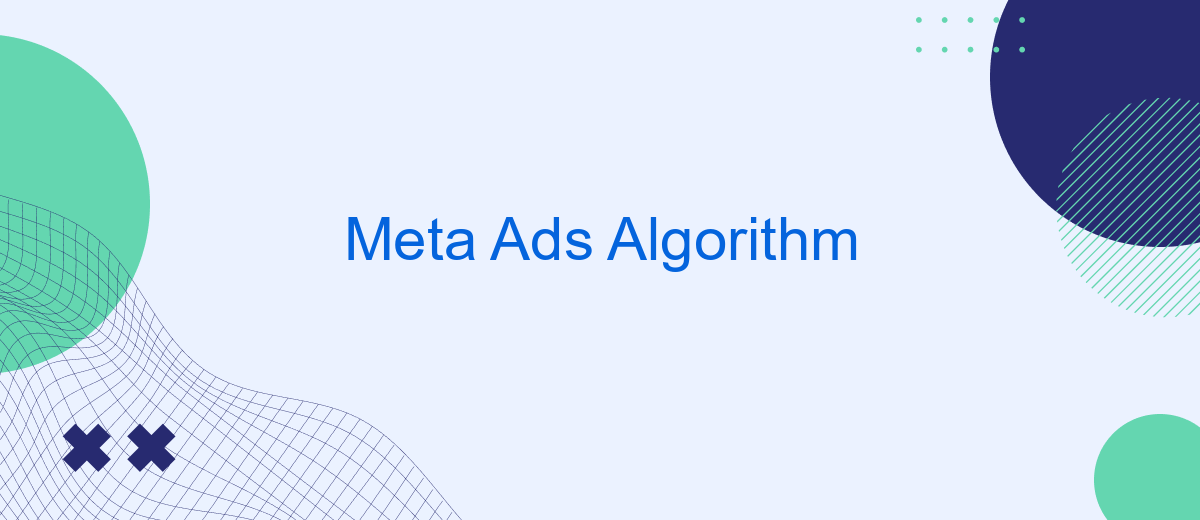The Meta Ads Algorithm is revolutionizing the way businesses approach digital marketing. By leveraging advanced machine learning techniques, this sophisticated system optimizes ad placement, targeting, and performance in real-time. This article delves into the intricacies of the Meta Ads Algorithm, exploring how it enhances ad efficiency, maximizes ROI, and offers unparalleled insights into consumer behavior.
Meta Ads Algorithm Essentials
Understanding the Meta Ads Algorithm is crucial for optimizing your advertising strategy on platforms like Facebook and Instagram. This algorithm determines the delivery and performance of your ads, taking into account various factors such as user engagement and ad relevance.
- Ad Relevance: Ensure your ads are highly relevant to your target audience to improve performance.
- Engagement Metrics: Monitor likes, shares, and comments to gauge the effectiveness of your ads.
- Budget Allocation: Properly allocate your budget to maximize reach and conversions.
- Integration Tools: Utilize services like SaveMyLeads to streamline data integration and enhance targeting.
By focusing on these key aspects, you can significantly improve the efficiency of your ad campaigns. Leveraging tools such as SaveMyLeads allows for seamless data integration, enabling you to make more informed decisions and optimize your advertising efforts. Understanding and adapting to the Meta Ads Algorithm will ensure that your ads reach the right audience at the right time, maximizing your return on investment.
Factors Influencing Meta Ads Reach

Several factors influence the reach of Meta Ads, which can significantly affect the performance of advertising campaigns. One of the primary factors is the quality and relevance of the ad content. Ads that are visually appealing, engaging, and relevant to the target audience are more likely to be shown to a broader audience. Additionally, the targeting settings play a crucial role; precise targeting ensures that ads are shown to users who are most likely to be interested in the product or service. This includes demographic targeting, interests, behaviors, and geographic locations.
Another critical factor is the budget and bidding strategy. A higher budget can increase the reach, but it's also essential to use an effective bidding strategy to ensure that the ad spend is optimized. Integration with external services like SaveMyLeads can also enhance the reach by automating lead management and ensuring that the ads are shown to potential customers promptly. Finally, the historical performance of the ad account, including past engagement rates and ad quality scores, can influence the reach of future ads.
Optimizing for Meta Ads Relevance

Optimizing for Meta Ads relevance is crucial for maximizing ad performance and ensuring that your target audience finds your content engaging and valuable. To achieve this, it's essential to focus on several key factors that influence ad relevance scores and user interaction.
- Audience Targeting: Use detailed audience segmentation to reach the most relevant users for your ads. This includes demographics, interests, and behaviors.
- Ad Content: Create compelling and high-quality ad creatives that resonate with your audience. Ensure your messaging is clear, concise, and aligned with user interests.
- Performance Monitoring: Regularly analyze ad performance metrics to identify areas for improvement. Use tools like SaveMyLeads to integrate data from various sources and streamline your optimization process.
By focusing on these areas, you can improve the relevance of your Meta Ads, leading to higher engagement rates and better return on investment. Leveraging services like SaveMyLeads can further enhance your ability to optimize and automate your ad campaigns, ensuring you stay ahead in the competitive digital advertising landscape.
Impact of Engagement on Meta Ads Performance

Engagement plays a crucial role in the performance of Meta Ads. When users interact with ads through likes, comments, shares, or clicks, it signals to the algorithm that the content is relevant and engaging. This, in turn, can lead to higher ad placements and more visibility, ultimately driving better results for advertisers.
Higher engagement rates can also reduce the cost-per-click (CPC) and cost-per-impression (CPM) for advertisers. When the algorithm detects high engagement, it often rewards the ad with lower costs and better reach. This makes it essential for businesses to create compelling and interactive ad content.
- Increased visibility and ad placements
- Lower cost-per-click (CPC) and cost-per-impression (CPM)
- Improved brand awareness and customer interaction
For businesses looking to optimize their ad performance, integrating tools like SaveMyLeads can be beneficial. SaveMyLeads helps automate the process of capturing and managing leads from Meta Ads, ensuring timely follow-ups and enhanced engagement. By leveraging such integrations, businesses can maximize their ad campaigns' efficiency and effectiveness.
Analyzing Meta Ads Results for Improvement
Analyzing the results of your Meta Ads campaigns is crucial for ongoing improvement and optimization. Start by examining key performance indicators (KPIs) such as click-through rates (CTR), conversion rates, and return on ad spend (ROAS). These metrics will help you understand which ads are performing well and which ones need adjustments. Utilize Meta's built-in analytics tools to gain insights into audience behavior, ad placement effectiveness, and overall campaign performance.
For more advanced analysis, consider integrating third-party tools like SaveMyLeads to streamline data collection and reporting. SaveMyLeads can automatically pull data from your Meta Ads campaigns and deliver it to your preferred CRM or analytics platform, allowing for real-time monitoring and quicker decision-making. By leveraging these integrations, you can focus on refining your ad strategies based on accurate and up-to-date information, ultimately driving better results and higher ROI.
FAQ
What is the Meta Ads Algorithm?
How does the Meta Ads Algorithm determine which ads to show?
Can I control how my ads are delivered by the Meta Ads Algorithm?
How can I automate and optimize my ad campaigns on Meta platforms?
What are the benefits of using automation tools for Meta Ads?
SaveMyLeads is a simple and effective service that will help you automate routine tasks and optimize business processes. Stop wasting time uploading leads from Facebook manually – you can do it automatically, saving a lot of time and money. Eliminate routine from workflows and achieve more with minimal investment of money, effort and human resources.
